Have you ever wondered how dogs became our loyal companions? The exploration of the dogs history, their domestication, and evolution is an intriguing journey. It provides valuable insights into the bond between humans and their best friends.
Moreover, studying the history of dogs allows us to witness the ongoing impact of humans on their breeding and genetic makeup. As seen in developing purebred dog breeds and establishing organizations. Like the American Kennel Club (AKC) set breed standards.
From the loyal Labrador Retriever to the noble and courageous German Shepherd, dog breeds have evolved and adapted to become our trusted companions, protectors, and guides. Join us as we uncover little-known facts about canine domestication and discuss the enduring bond between humans and dogs. Whether you’re a dog lover or simply curious about our furry friends, let’ give you a deeper appreciation for man’s best friend.
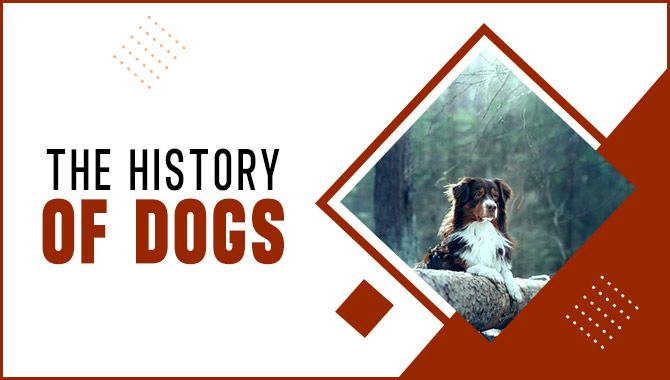
Little-Known Facts About Canine Domestication
The enduring presence of dogs in various cultures and religions symbolizes remarkable traits such as loyalty, bravery, and unwavering devotion. Today, dogs hold a special place in our hearts as beloved pets, further strengthening the unbreakable bond between humans and their canine counterparts.
By continuing to learn about and care for dogs, we can ensure that this enduring bond remains strong for generations to come. Here are some little-known facts about dogs.
- Scientific research has shown that dogs can understand human emotions and form deep connections with their owners. The history of dogs intertwined with our own, from the early domestication of the breed to the modern dogs we know.
- Dogs have played various roles throughout history, serving as working animals, protectors, and companions. From the ancient Egyptians, who revered dogs as symbols of loyalty and protection, to the American Kennel Club, which recognizes over 200 different breeds, dogs have held great importance in different times and cultures.
- In the United States, dogs have become a part of everyday life, with many households considering them family members. The enduring bond between humans and dogs goes beyond just companionship.
- Dogs have proven their value in assisting people with physical and emotional needs. Guide dogs, such as the Labrador Retriever and German Shepherd, support individuals with visual impairments. In contrast, therapy dogs offer comfort and emotional support to those facing mental health challenges.
- Dogs have even been trained to assist individuals with post-traumatic stress disorder, using their keen sense of smell and intuition to provide security.
The History Of Dogs About Domestication And The Human-Canine Bond
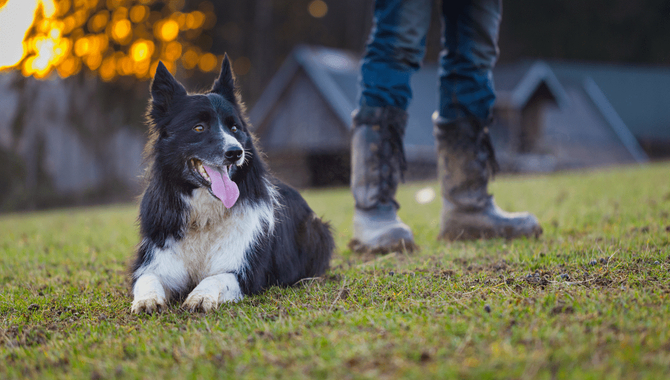
The history of dogs is not just a story of domestication and breeding. It is a testament to our enduring bond with these incredible creatures. They have been by our side for thousands of years, providing companionship, protection, and love.
Today, we face challenges such as overbreeding, health issues, and irresponsible ownership. There are opportunities for dog training, healthcare advancements, and understanding the genetic makeup of different breeds. The domestication process began when wolves started scavenging human garbage, eventually forming a mutually beneficial relationship with humans.
This long and intricate journey has resulted in the development of various dog breeds. Each with its unique traits and characteristics. From the loyal and intelligent Labrador Retriever to the brave and versatile German Shepherd, dogs have become man’s best friend and serve us in countless ways. Their wolf ancestors continue to influence their behavior, with pack dynamics and territorial marking still present in modern dogs.
The Earliest Evidence Of Domesticated Dogs
The earliest evidence of domesticated dogs dates back to over 15,000 years ago. Archaeological findings have shown that dogs were the first domesticated animal and were popular for various purposes, such as hunting, guarding, and companionship. People believed that the domestication of dogs occurred when wolves began to frequent human settlements in search of food.
The wolves were less aggressive and more social with humans. And then gradually selected and bred, leading to the development of the first domesticated dogs. The relationship between humans and dogs has been mutually beneficial, with dogs providing companionship and protection to their owners.
In contrast, humans have provided their furry friends with food, shelter, and care. As time passed, scientists bred dogs selectively and developed different traits and characteristics, leading to various breeds we see today. Despite the many changes in the relationship between humans and dogs over thousands of years, the bond between the two species remains strong and enduring.
Evolution Of Dogs: From Wolves To Domestication
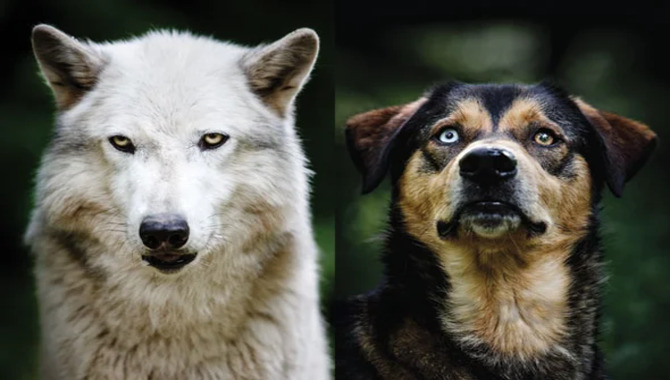
The evolution of dogs has traces back to their ancestors, the wolves. Over a long time, wolves and humans formed a relationship that led to the domestication and evolution of dogs. Early humans likely domesticated wolves for their hunting abilities and as companions, forming a special bond between humans and canines.
Through domestication, dogs gradually adapted to life with humans and developed traits that made them more suited to be companions. This journey of evolution from wolves to domestication showcases the unique and enduring bond between humans and dogs.
Ancient Dogs: Dogs In Antiquity
Dogs have played a significant role in ancient civilizations, symbolizing loyalty and companionship in Egypt, Greece, and Rome. The Egyptians, valuing their protective qualities, depicted dogs in artwork and even buried them with their owners for the afterlife.
The Greeks, who admired loyalty, used dogs as hunting companions, while the Romans had a versatile bond with them, utilizing them for guarding, hunting, and entertainment in fights. By examining the history of dogs in antiquity, we gain insight into the profound connection between humans and these loyal creatures that have spanned time and continents.
Dogs In Mythology And Religion
Dogs have played significant roles in mythology and religion throughout history, representing concepts such as loyalty, protection, and divine guidance. In ancient Greek mythology, dogs were close to the god Hades, guiding souls to the afterlife. Similarly, in Norse mythology, people believed dogs to be guardians of the underworld, accompanying the souls in their journey.
Dogs hold a special place in religious texts, including the Bible, where they symbolize loyalty and serve as protectors. With their unwavering loyalty and protective nature, dogs were popular as divine companions throughout different cultures and civilizations.
Hunting With Dogs: From Mastiffs To Beagles
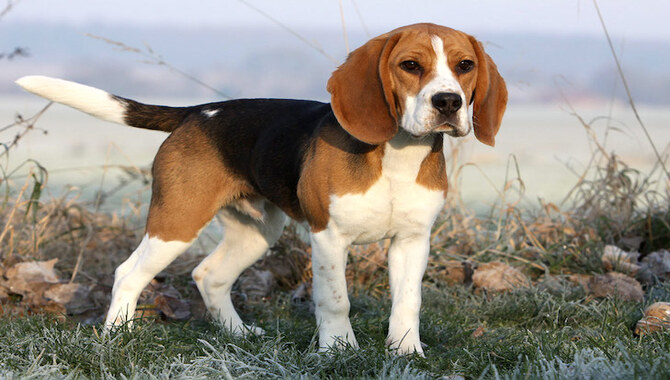
Dogs have been popular for hunting purposes for thousands of years, forging a deep connection between humans and their trusted canine companions. In ancient civilizations, such as Egypt and Greece, dogs received high value for their hunting skills and played pivotal roles in hunting expeditions.
Under medieval times, Mastiffs, renowned for their impressive size and strength, emerged as prominent hunting dogs. They were adept at pursuing and capturing large game, proving indispensable to hunters. Conversely, Beagles were selective breed to excel in hunting small game, such as rabbits and hares, due to their agility and keen senses.
The utilization of dogs in hunting expeditions solidified the bond between humans and canines and laid the foundation for developing the modern-day pet dog, cherished for its unwavering loyalty and companionship.
Dog Breeds: The Evolution Of Purebred Dogs
The evolution of purebred dogs is a fascinating journey that stems from the long history of dogs and their domestication by humans. Through selective breeding for specific traits and characteristics, the concept of purebred dogs emerged with the establishment of kennel clubs in the late 18th century.
These clubs developed breed standards, outlining the ideal appearance and temperament for each breed, leading to the creation of various dog breeds. From ancient origins to relatively new creations, purebred dogs have played significant roles in human history and have become man’s best friend.
Modern-day dog breeds, such as the Labrador Retriever and the German Shepherd, are direct descendants of these early domestic dogs. The genetic studies and archaeological evidence have shed light on the evolution of dogs from their wolf ancestors and how different times, regions, and human preferences have shaped them.
Working Dogs: Police, Military, And Service Dogs
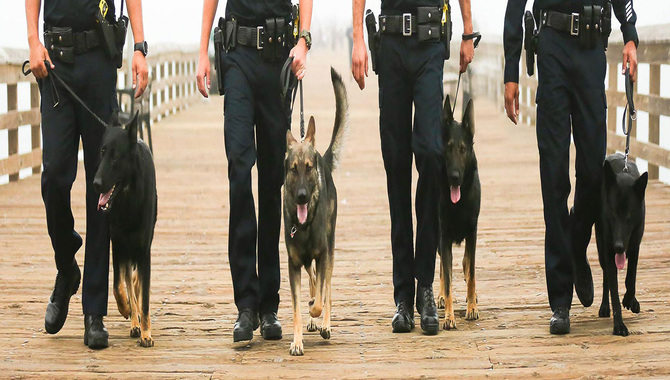
Dogs have a long history of serving humans and have made remarkable contributions to society. Working dogs have high training and possess unique abilities that make them indispensable. Their dedication, loyalty, and unwavering focus make them exceptional partners for their human handlers.
These dogs undergo rigorous training programs that develop their skills and enhance their natural abilities. From intense obedience training to highly specialized tasks, working dogs work countless hours to excel.
Furthermore, they form a deep bond with their handlers, relying on clear communication and trust to accomplish their missions effectively. Working dogs, be it police, military, or service dogs, impact the lives of the people they serve, showcasing the enduring bond between humans and dogs.
Police Dogs
Police dogs, also popular as K-9 units, are highly trained to assist law enforcement officers. They are expertly trained in tracking criminals, detecting illicit substances like drugs and explosives, and apprehending suspects.
Military Dogs
Similarly, military dogs play a crucial role in the armed forces. They are trained in various disciplines, including bomb detection, search and rescue operations, and patrol work. These brave canines are invaluable to the military, aiding in crucial missions and ensuring personnel safety.
Service Dogs
Service dogs are another working dog category. They undergo specialized training to assist individuals with disabilities. Guide dogs, for example, are trained to guide and support people with visual impairments, enabling them to navigate their surroundings confidently. On the other hand, hearing dogs assist those with hearing loss by alerting them to important sounds and providing companionship.
Famous Dogs: Dogs In Pop Culture And History

Dogs have been an integral part of human history for thousands of years, with evidence of domestication dating back to at least 15,000 years ago. Dogs have played significant roles throughout different times and cultures, serving as hunting companions, guard animals, and even religious symbols.
In pop culture, famous dogs like Lassie, Rin Tin Tin, and Snoopy have captivated the hearts of millions. Through books, movies, and TV shows, becoming beloved icons.
Additionally, dogs have been popular for their loyalty and bravery, as seen in the story of Hachiko, the Akita dog who faithfully waited for his deceased owner for nearly a decade at a train station. The enduring bond between humans and dogs is remarkable, with dogs offering companionship, emotional support, and therapeutic benefits.
The Future Of Dogs: Challenges And Opportunities
Working dogs have been integral to human society for thousands of years, serving in various capacities. Police dogs, for instance, play a vital role in helping law enforcement agencies combat crime. These incredibly skilled canines are trained to track suspects, search for drugs or explosives, and apprehend criminals.
Similarly, military dogs contribute greatly to the armed forces by aiding in bomb detection, search and rescue missions, and patrol duties. Additionally, service dogs provide invaluable assistance to individuals with disabilities, such as guide dogs for the blind or hearing dogs for the deaf.
The contributions of these highly trained working dogs are immeasurable, showcasing the remarkable bond between humans and their canine companions.
Conclusion
The bond between humans and dogs has endured throughout history. Believed to be domesticated from wolves around 15,000 years ago, dogs played a crucial role in the development of human civilizations. This early relationship was based on mutual benefits, such as hunting and protection. Dogs have become beloved members of families, making them our best friends and companions.
To sum up, studying the history of dogs allows us to appreciate the deep and enduring bond between humans and canines. From their evolution from wolves to their role in ancient civilizations, mythology, and even hunting, dogs have played a pivotal role in shaping our society and culture.
As we look towards the future, dogs have challenges and opportunities, including their roles as working dogs and famous companions. We can continue celebrating and protecting this special relationship by understanding their history.
Frequently Asked Questions
Who First Had A Dog As A Pet?
The origins of keeping dogs as pets are not fully known, but archaeological evidence suggests that early humans formed relationships with dogs around 20,000 to 40,000 years ago. Wolves, the ancestors of modern-day dogs, likely coexisted with humans for hunting and companionship.
What Was The First Type Of Dog On Earth?
The exact breed of the first dog on earth is unknown. But dogs are believed to have evolved from wolves gradually over thousands of years. Popular theories suggest that the first dogs were domesticated in Asia or Europe and were likely used for hunting, companionship, and protection.
Where Do Dogs Come From Originally?
Dogs are believed to have originated from wolves through a process of domestication that occurred thousands of years ago. They were likely domesticated for hunting, protection, and companionship. However, the exact origins of dogs are still a subject of scientific research and ongoing debate.
How Did Dogs Evolve From Wolves Exactly?
Dogs evolved from wolves through domestication, although the specific timeline is still debated among scientists. Selective breeding played a crucial role in shaping the characteristics of domestic dogs. And genetic studies have offered valuable insights into the evolutionary connection between wolves and dogs.
How Many Dogs Are Too Many?
The number of dogs considered “too many” depends on various factors. Such as available space, resources, time commitment, and the ability to provide proper care and attention to each dog. For responsible dog ownership advice, seek guidance from professionals like veterinarians or animal behaviorists.
